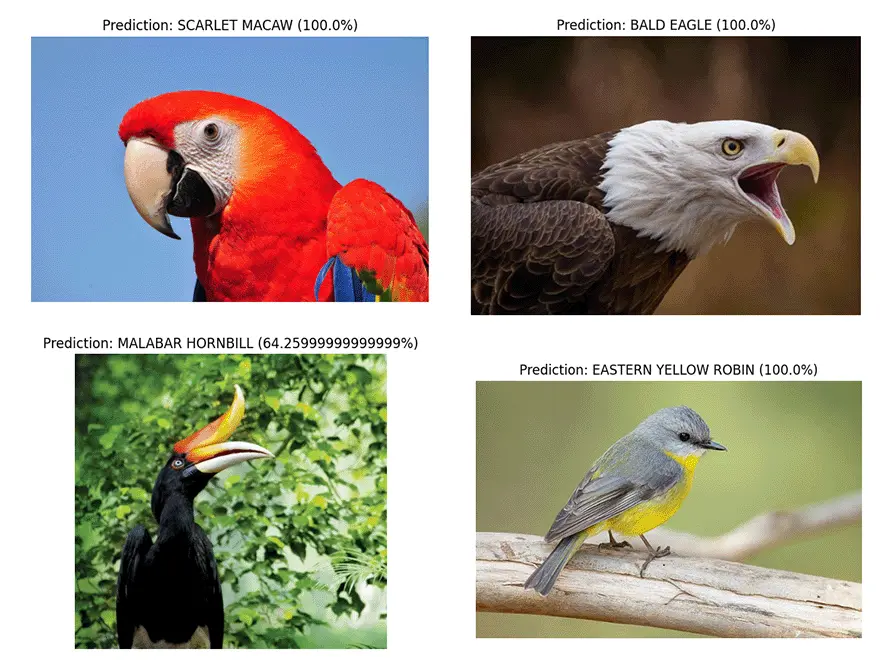Ever wondered what bird you're looking at during your morning walk? That's exactly the problem this project tackles using state-of-the-art computer vision. What started as a bootcamp assignment for Ruangguru's Engineering Academy became a model with over 90,000 downloads on HuggingFace's model hub. This was my deep dive into transfer learning and computer vision, building an image classifier that can identify 525 different bird species from a single photo.
The Challenge
Bird classification is surprisingly tricky for AI—many species look remarkably similar, and distinguishing between a House Sparrow and a Eurasian Tree Sparrow requires noticing minute differences in head markings. Add varying lighting, partial occlusion by branches, and different poses, and you've got a genuinely challenging computer vision problem.
The solution leverages EfficientNet-B2, a mobile-optimized architecture that balances accuracy with computational efficiency, using transfer learning from ImageNet-1K and fine-tuning on Gpiosenka's comprehensive dataset of:
- 525 distinct species with global representation
- 84,635 training images for robust pattern learning
Technical Implementation
The training strategy involved:
- Freezing the backbone layers initially
- Replacing the classification head
- Gradually unfreezing layers with discriminative learning rates
This approach prevents catastrophic forgetting while adapting to bird-specific features. Using PyTorch Lightning for clean, scalable training code and Kaggle's P100 GPU for the heavy lifting, the model achieved 99% validation accuracy after just 26 epochs—approaching human-expert level performance for many species pairs.
Community Impact
The real validation came from the community: 90,000+ downloads on HuggingFace Hub, with users deploying it in:
- Citizen science projects for biodiversity monitoring
- Educational apps for biology courses
- Mobile apps for bird watching enthusiasts
- Research applications in ecology and conservation
One of the most memorable aspects was my first HuggingFace discussion when a user asked about converting the model to ONNX format for their mobile app—what seemed like a simple request became a deep dive into model deployment pipelines and cross-platform optimization.
Key Lessons
This project reinforced several important lessons:
- Transfer learning is incredibly powerful as ImageNet pre-training provided an enormous head start
- Community engagement adds real value since users revealed deployment needs I never considered
- Model accuracy is just the beginning—real impact comes from accessibility and practical deployment
The journey from bootcamp assignment to 90,000+ downloads proves that with solid technical foundations and community engagement, student projects can create genuine real-world impact.
